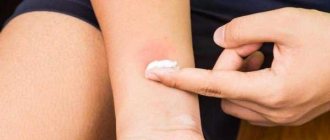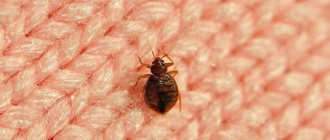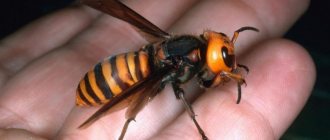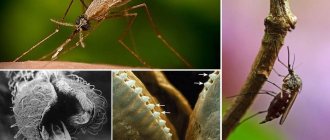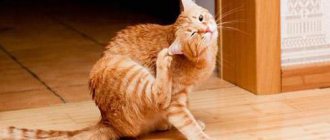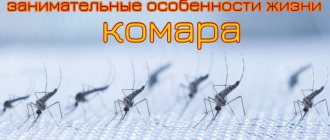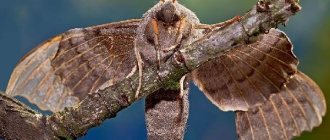The story of how bedbugs move is rarely complete without legends and outright fantasies. Meeting them makes a person want to move to a safe distance. Insects of the suborder Hemiptera (Hemiptera) do not pose any threat. They can swim, fly, jump and run. Domestic bed bloodsuckers only crawl, their movement speed is low.
House bugs move only with the help of their legs.
General information about bedbugs
Some types of parasites differ from each other in the following ways:
- lifestyle;
- nutritional characteristics;
- appearance.
Representatives of hemiptera have the same structure of the oral cavity. Some species feed on plant sap or human blood.
Parasites have a distinctive feature - they emit an unpleasant odor, which is formed as a result of the functioning of special glands located on the belly of the bug between the first and second pair of limbs. The aroma of the secreted liquid repels other insects.
The garden is inhabited by soldier bugs that destroy pests. Representatives of the Podisus species feed on Colorado potato beetles, and the turtle bug damages seedlings and young trees. Many species of the suborder Hemiptera consume the blood of animals, birds, bats, and humans. The clothing bug belongs to them.
Features of domestic bloodsuckers
An insect that lives in bed or linen cannot exist in an environment other than human habitation. Bed bugs have a size of no more than 8 mm, a flattened abdomen, which slightly expands on the sides.
Domestic bugs have defective wings; their capabilities are not enough to fly.
During its development, the bloodsucker goes through a stage of incomplete transformation. Nymphs hatch from eggs; the larvae are much smaller than the mother and do not have wings.
Linen parasites crawl along walls and ceilings in search of food, using a small proboscis to pierce human skin. Representatives of the order Hemiptera feed at night, being particularly active at 4-5 am.
Insects have a good sense of smell and identify food sources by smell.
The bug quickly finds small capillary vessels, pierces the skin, injecting an anesthetic composition.
Having drunk blood, it moves along the surface of the body 2-3 cm and bites the person again, continuing the process of saturation.
Main reasons for migration
The movement of blood-sucking insects is a forced or natural process.
Parasites enter an apartment in the following ways:
- on the clothes and shoes of family members;
- when purchasing contaminated furniture or items;
- on pet fur.
Migration of bedbugs occurs during renovation of premises or during the period of disinfestation measures. Relocation of bedding species is carried out in the dark. Only during disinfestation do insects migrate during the day. The movement of blood-sucking individuals can also occur along the external walls of multi-story buildings.
The main reason for the movement of bedbugs is hunger, which threatens their existence. The migration of laundry parasites from neighbors is a common process in a multi-story building.
How do insects move?
Domestic bloodsuckers do not run very fast; they are only able to crawl from their shelter to the location of the victim, moving slowly with the help of 3 pairs of limbs.
In the early morning or during the daytime, it is difficult to notice insects, because they make only short dashes. Linen bugs are unable to jump and fly due to the lack of wings. The inability to move quickly affects their lifestyle: for most of the day they hide in crevices, which they leave when they are hungry.
During daylight hours, bedbugs in the apartment hide in cracks.
Moving slowly, bedbugs crawl to the sofa or bed and attack a sleeping person.
From one apartment to another
Insects can penetrate from an infected home into a clean apartment, hiding in the folds of outer clothing. Sometimes guests whose home is infested with parasites bring the pests into the house of their friends or acquaintances.
Bloodsuckers can be introduced by purchasing old furniture or used items from owners whose home is a habitat for pests.
Bedbugs can enter an apartment by settling on the back panel of the sofa, hiding in small holes or cracks.
In favorable home conditions, an adult female leaves up to 6 clutches daily. Young parasites are capable of mating a month after hatching from the eggs.
Around the house
Having penetrated into a living space, bedbugs can quickly spread throughout the apartment if a person discovers their shelter and violates its integrity. In the first days, no one notices the blood-sucking individuals; they rarely crawl within sight. After 1-2 weeks there are more of them, they migrate between rooms in search of food. Insects do not form nests; if their peace is disturbed, they crawl around the apartment in search of a new shelter.
Symptoms of infection
The most obvious evidence that there are bed bugs in the house is the discovery of an adult bed bug. At the same time, sometimes a living insect may indicate that the neighbors are being disinfested, and the surviving bloodsuckers have found a new home. Thus, when an adult is identified, the potential habitats of these parasites should be immediately inspected.
Bites on the body
The main symptom of bedbug infestation is bites that regularly appear on the skin. Red marks appear on the neck, back, cheeks and arms. Parasites do not bite in hairy areas; they choose places where the skin is thin and smooth. For this reason, children and women suffer more from these insects.
Bed bugs become active at night, so new bites can be detected in the morning immediately after waking up. Small red bumps are sometimes confused with an allergic reaction.
In this case, the bedbug bites are close to each other, forming a path. The number of red bumps on the skin increases every day along with the insect population, which is rapidly increasing. If the fight against parasites is not carried out, then a person can be bitten up to 300-350 times during the night.
Traces of blood on the bed
The substance that the parasite injects under the victim’s skin disrupts blood clotting. For this reason, a drop of blood appears at the site of the lesion, which, falling on the bed, leaves a mark. Bedding and waste products contaminate.
To remove stains, rinse the fabric in cold water. You can also remove traces with hydrogen peroxide (3-5%).
Hydrogen peroxide removes traces of blood stains after a bug bite.
The appearance of blackheads
Bedbugs are living creatures, so they have a digestive process and waste. Parasite feces are liquid and dark brown in color, but they quickly cool and become hard.
You can find excrement anywhere in your home. Most often, parasites accumulate near or on the bed. The smell of bedbug waste resembles bad cognac.
When the larva hatches from the egg, it molts several times as it grows. Each time it sheds its chitinous coating, which can be found on the floor, furniture, and windowsill.
Unpleasant smell
The sense of smell is a way for bedbugs to navigate in space, mate and notify their relatives of danger.
The aroma that these parasites exude is pleasant - sickly sweet, reminiscent of the smell of almonds or rotten raspberries. If there are a lot of insects in the apartment, the aroma becomes constant. If you smell this smell at least once in your life, you will no longer be able to confuse it with any other.
Pest running speed
Bedbugs move at a speed of 1 m per minute. Small larvae move more slowly, so they live near human sleeping places so as not to move long distances at night.
House bugs move exclusively in one way - crawling from place to place.
During the migration period, domestic parasites travel long distances. In 24 hours, moving through a ventilation shaft, bedbugs crawl several hundred meters.
Domestic bloodsuckers move slower than cockroaches. Predatory bugs of the Antacoris species, living in tropical countries, move faster than linen bugs and attack sedentary insects - mollusks, caterpillars, larvae.
How bedbugs are transmitted by people themselves
A person can bring domestic parasites into an apartment on outer clothing. Having entered the room, insects take up residence in wardrobes. Favorable conditions for the reproduction of bedbugs in the folds of clothing are a temperature of +25°C and high humidity. If the owner purchased old furniture, he may infest the house with blood-sucking insects and discover them several months later.
Soft toys and old books brought into the apartment may be infested with bedbugs. Sometimes pests enter the home via packages that have been stored in unsanitary conditions in a contaminated warehouse.
While staying at a hotel or inn, a person does not notice that parasites have entered his luggage and brings them into his apartment.
Danger for travelers
On the way, you may encounter a nuisance - the presence of bedbugs in a compartment or hotel room. This likelihood increases if sanitary standards are violated, for example, bed linen is not changed or the room is not cleaned. At the same time, no one discovers the nests of bedbugs, so the insects actively reproduce. As a result, the traveler is attacked by parasites, and additionally carries new tenants in his suitcase, who will later move into his apartment.
Alexander Breken, 39 years old, Rostov-on-Don I travel often, so I always take few things. Despite this, I somehow overlooked the parasites and did not see them among the clothes. As a result, there are now bedbugs in my house, I am covered in bites and itching terribly.
The possibility of insects appearing in the house due to exterminators
Chemical treatment of the premises forces parasites to leave their habitat. Individuals that did not die during disinfestation crawl into neighboring apartments located in multi-story buildings. Bed bugs do not leave their habitat if disinfestation was carried out unprofessionally, or during work they used drugs to which the pests have become resistant.
The survivors after disinfestation begin to seek shelter in other apartments.
Blood-sucking insects can re-enter the room after chemical treatment if there were too many of them and the poison did not reach the hiding places of the individuals.
Common Myths
Many people feel fear at the mere mention of blood-sucking parasites and willingly believe various stories about bed bugs.
The following are popular among them:
- Household parasites carry dangerous diseases. This statement is not true. A person who is constantly bitten by bedbugs develops symptoms: itching at the site of the skin puncture, insomnia, allergic reactions on the skin. Parasite bites negatively affect the state of the nervous system, symptoms of depression often develop, a person feels anxiety, and panic seizes him. Scientists have found that domestic bloodsuckers are not carriers of dangerous diseases.
- The small size of insects makes them difficult to detect with the naked eye. This is an incorrect statement, because a person with normal vision can see the parasite. The body of the bug is slightly flattened, but after eating it increases in size, then the insect is easy to notice in the bed or behind the carpet.
- Linen specimens live only in beds. An erroneous statement, because Parasites are found not only in the folds of bedding, they live in curtains, the seams of chairs and under the upholstery of the sofa.
Bed bugs fly and jump
Bed parasites only move slowly over short distances, but are unable to fly or jump. A hungry insect covers a distance of 30 cm in 60 seconds. Having eaten, the bug becomes less mobile, because his body increases in size several times.
The size of a well-fed bug increases significantly, it becomes more noticeable and inactive.
The pest crawls a short distance 2.5 times slower.
There is a myth among owners of comfortable apartments and country houses that a blood-sucking insect can jump and fly. The reason for the misconceptions is related to the behavior of other representatives belonging to the order Hemiptera. Among them there are individuals that make jumps and can fly in air currents over long distances.
The house bug has a special body structure. 6 small limbs do not allow the insect to make even short jumps. The wings, which fit tightly to the upper part of the body, are in their infancy. They can only be seen upon closer inspection.
When studying information about bedbugs, it becomes clear that blood-sucking parasites can move around the apartment only by crawling from one place to another.
We don’t end our search on the bed...
In our practice, we were sometimes able to find bedbugs in completely unexpected places.
I’m not talking about baseboards and under parquet floors - they are almost always there. But it happens that their nests are found behind books on shelves and behind the shelves themselves, inside laptops and computer system units, behind pictures on the walls, in safes, in sockets, in old things that people have not worn for a long time. Simply put, the bed is just the beginning. This is where you discover bedbugs and this is where you start looking for them. And where you will find all the other nests is very difficult to say. The main thing is to understand that bedbugs are not only infested in beds. It’s very, very rare that this happens: they are in the bed, but not anywhere else.
Now. You found bedbugs in the bed. This means that you need to look for them in the entire room, and preferably in the entire apartment. Here you need to inspect all the cracks, holes, cavities where they can physically get into. The following rule works here: the more difficult it is for you to get to a particular bedbug shelter, the more likely they are to have a nest there.
In our practice, we were sometimes able to find bedbugs in completely unexpected places. I’m not talking about baseboards and under parquet floors - they are almost always there. But it happens that their nests are found behind books on shelves and behind the shelves themselves, inside laptops and computer system units, behind pictures on the walls, in safes, in sockets, in old things that people have not worn for a long time.
It is not possible to get rid of ticks completely and forever; the main rule is to keep the house clean and carefully care for bedding.
What will help get rid of dust microorganisms in pillows:
- Ideally, replace down and feather products with accessories with synthetic filling: padding polyester, holofiber, comforter, which must be washed once every six months at temperatures above 50 °C.
- If you don’t want to part with natural materials, or for children, you can choose an alternative with the following fillings: buckwheat husk, bamboo or coconut fiber, latex.
Fans of fluff and feathers can bring out “guests” in several ways:
- Airing the pillows in the air for at least 5–6 hours gives a temporary effect. In winter - in frost, in summer - in direct sunlight. This method does not work for long, since tick eggs are insensitive to heat and cold, only adult individuals die.
- Once a year it is worth disinfecting such products with special dry cleaning products.
- You can also clean the pillow yourself. The bedstead needs to be washed, ironed (or replaced). Down filling - treat with a soap solution (100 g of laundry soap, 100 g of ammonia per 10 liters of water), rinse thoroughly and dry, then put the product back together.
It is worth noting that it is impossible to get rid of dust mites by cleaning only the bed linen. Additionally, you need to weaken the provoking factor:
- sort out deposits of soft toys;
- reduce the number of carpets and curtains;
- Follow the rules for storing winter clothes.
Also, during wet cleaning, you can add special antiparasitic agents.
Interesting Facts
Residents of apartment buildings should know some signs of the presence of linen bloodsuckers indoors:
- The bug has an odor reminiscent of coriander.
- An indisputable sign of the presence of insects is complaints from family members about the appearance of numerous bites located on the body.
- Peak food intake for parasites is from 0:00 to 05:00 hours.
- An insect that feeds on blood can go without food for 2 months.
- An adult quickly finds a food source, because senses the warmth of the human body and the presence of carbon dioxide in the exhaled air.
- A bug bite causes an allergic reaction in 80% of people.
- The insect is often the cause of anemia in young children.
- Triatomidae are carriers of the causative agent of Chagas disease or American trypanosomiasis.
- An increase in the number of blood-sucking parasites is facilitated by the formation of populations resistant to the effects of insecticides, for example, 25% of cypermethrin, which is part of disinfectants.
There are many ways to combat home bugs, which allow you to destroy all blood-sucking insects living in the room.
The structure of cockroaches and wings
Features of the body structure:
- cockroach length: 1-10 cm;
- 6 limbs consisting of segments;
- numerous bristles on the paws;
- long mustache: straight or curved;
- Not everyone has wings, for example, in some individuals they are reduced - only processes are visible, which does not allow them to rise into the air, which means that in this case the answer to the question whether cockroaches can fly will be negative;
- the head is most often triangular;
- there are eyes, some species lack them (for example, cave insects), and some have visual organs, but they function poorly and are almost not used;
- large pronotum;
- the body is segmented, consists of tergites and sternites, which ensures its mobility, since cockroaches are often large;
- thighs are often massive, flattened;
- cerci at the end of the body.
Considering that the wings are easily deformed, they require protection in the form of elytra - they are leathery, denser, and located on top. Some insects have transparent wings protruding beyond the body.
Close view of flying
